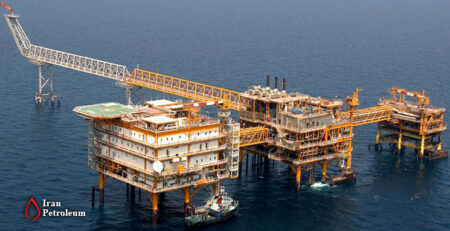Increasing the supply of crude oil and derivatives to the north of Iran
A total of 50 billion liters of crude oil and petroleum products were transferred via pipelines from Tehran to northern regions, namely Gilan and Mazandaran provinces in the last fiscal year (March 2022-23), indicating a 12% increase compared to the previous year, managing director of the Iranian Oil Pipeline and Telecommunication Company’s Tehran office said on Monday.
“Of the total transfer, 20 billion liters were crude oil and the rest was derivatives,” Mojtaba Besharatian was also quoted as saying by the Oil Ministry’s news service.
The construction of new pipelines to transfer petroleum products from southern oil terminals to Tehran tops the agenda of the National Iranian Oil Refining and Distribution Company, as this approach has priority over other means of supply such as tanker trucks, he added.
“The completion of Naeen Oil Terminal project in Isfahan Province, in addition to the 26-inch 420-km-long Naeen-Kashan-Rey pipeline, has helped increase gasoline supply from Persian Gulf Star Refinery in southern Hormozgan Province to Tehran from 170,000 barrels per day to 220,000 barrels.”
Gasoline is transferred from Bandar Abbas to Rafsanjan and then from Rafsanjan to Naeen and eventually it arrives in Tehran.
Nain-Kashan-Rey pipeline was a macro plan that took four years to be completed. Without the pipeline, thousands of tankers would be needed to move the petroleum products.
“Close to 50,000 tons of metal pipes were used to complete the plan and the pumps were manufactured by local engineers.”
According to the NIORDC website, IOPTC’s Tehran office covers northern provinces, namely Gilan, Mazandaran, North Khorasan, South Khorasan, Khorasan Razavi, Semnan, Golestan, Qazvin and Zanjan.
IOPTC is a subsidiary of NIORD.
Petroleum Pipelines
Iran has close to 14,000 km of oil and petroleum pipelines, of which 5,000 km are used to transfer crude oil and the rest transport diesel, Euro-4 and Euro-5 gasoline, kerosene and jet fuel.
The official said pipelines carry 123 billion liters of oil and byproducts per year.
In the absence of expanded pipelines, the company would need 60,000 fuel trucks to deliver the products.
According to Besharatian, crude oil and byproduct pipelines in Iran on average are 35 years old. “However, with rehabilitation and using new coating we can enhance the lifespan of the pipelines.”
The official said his company is employing new methods such as intelligent pigging of pipelines, curbing corrosion of metals by using cathodic protection technique and regular inspections of installations to reduce accidents and augment safety.
Referring to installations in Tehran, he said the main pipelines include the 14-inch Rey-Tabriz link, the 18″ Rey-Qazvin-Rasht pipeline, the 22″ Rey-Shahroud connection and the 16″ Rey-Sari pipeline.
The company also supplies power plants with diesel in Tehran, Alborz and Gilan provinces when they face a shortage of gas that is the main feedstock.
Repair and renovation of pipelines are carried out on a regular basis for the sustainable and safe delivery of crude oil and byproducts.
Noting that the transfer of oil derivatives by road doubles the risk of accidents, the official said the transfer of each liter of oil and petroleum byproducts by pipeline costs the company 0.1 cent, while delivering the same volume by trucks will be tenfold costlier.
Road transportation of crude oil
The IOPTC chief said that in terms of energy use, road transport is the least efficient, adding that the approximate cost of moving a barrel of crude oil by road is 10 times higher than via pipeline.
Data released by NIORDC show trucking oil has a higher fatality rate compared to other means of transportation, such as railroads and pipelines.
Road transport for transporting oil and other products remains crucial due to the lack of rail infrastructure. But this mode is also the riskiest compared to other supply systems and poses the biggest threat to human life, economic cost and the environment.
Referring to the volume of fuel supplied to power plants, Besharatian said, “Last year, about 3 billion liters of liquid fuel were delivered to power plants via pipelines.”
A number of gas-powered units in the power plants across the country are deprived of natural gas in the cold season when household natural gas consumption peaks and they have to burn liquid fuel to generate power.
“A total of 68 billion liters of crude oil were delivered last year, which show a growth of 5% compared to the previous year,” he said.
Published: May 1, 2023
If you want to order petroleum, petrochemical and chemical products from Iran, please do not hesitate to send Iran Petroleum an email.












Leave a Reply